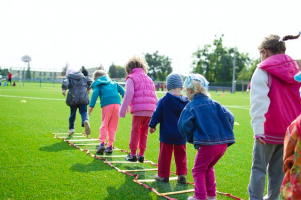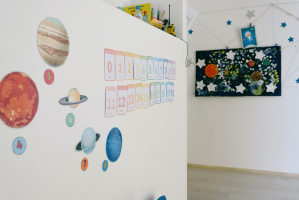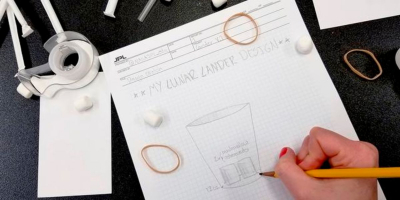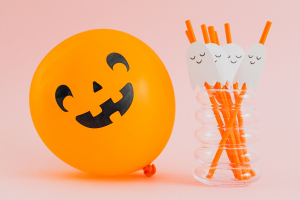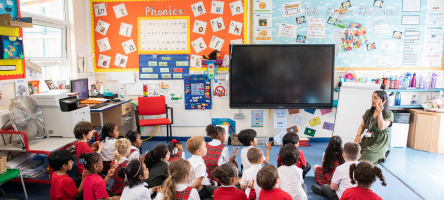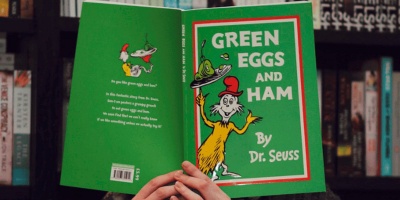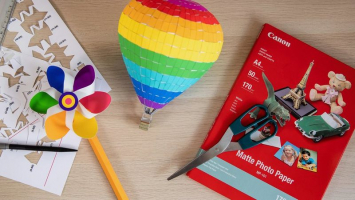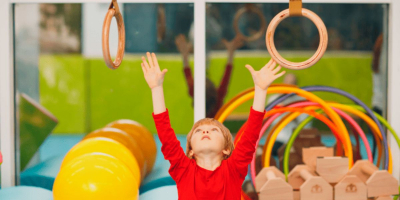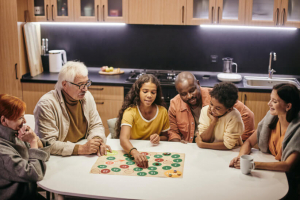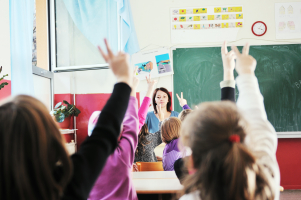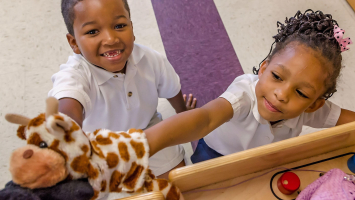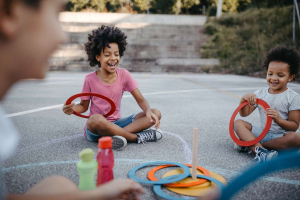Top 10 Funnest Preschool Activities
In the preschool stage, learning through games is an effective and fun method. Participating in fun educational games and activities are effective ways to ... read more...develop children skills. Below is a list of fun preschool activities that help children develop their sorting, counting, basic skills and explore their unlimited creativity. Let's discover the joy of learning through these rich and exciting activities!
-
Create an immersive learning experience in your preschool classroom with the captivating space themed moon sand sensory bin. This hands on activity not only sparks curiosity but also engages young minds in sensory exploration. As your preschoolers dive into this cosmic adventure, they'll encounter the unique texture of moon sand, providing a sensory rich encounter that encourages tactile awareness.
Encourage your little learners to articulate their observations, prompting them to describe the distinctive characteristics of moon sand compared to regular sand. This activity promotes language development as children express their thoughts and feelings, fostering communication skills crucial for their early education.
The space themed setting adds an extra layer of excitement, transporting children to the enchanting world beyond our planet. They can mold, shape and manipulate the moon sand to create imaginary lunar landscapes, enhancing their fine motor skills and creativity. This multisensory experience also contributes to cognitive development, allowing preschoolers to make connections between what they see, touch and verbalize.
Incorporating the moon sand sensory bin into your curriculum not only makes learning enjoyable but also provides a valuable opportunity for children to explore, investigate and learn through play. This activity transcends traditional teaching methods, fostering a love for learning while nurturing crucial developmental aspects in the early years of education.
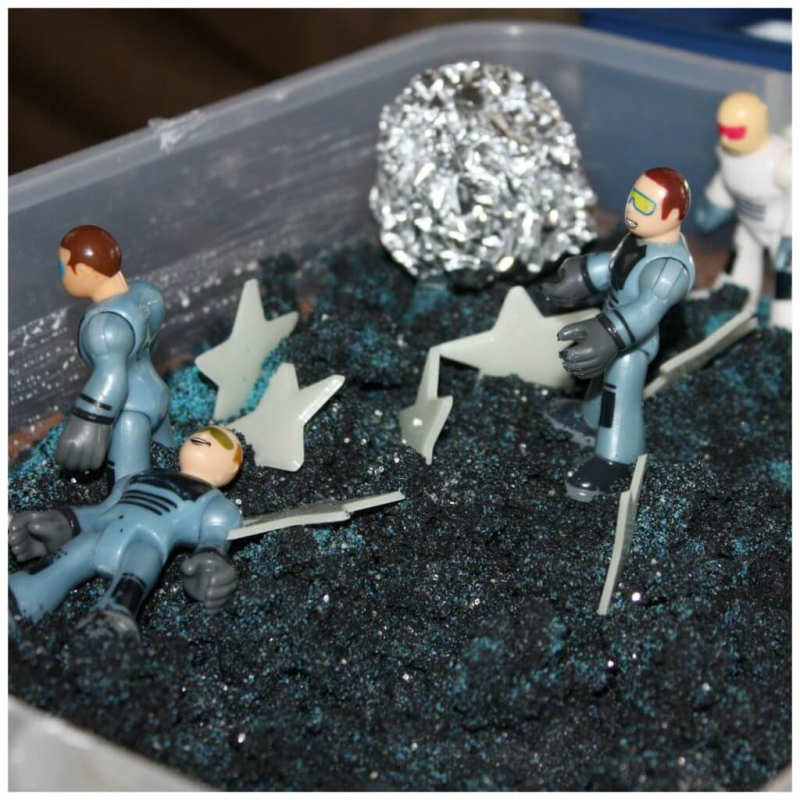
Space-Themed Sensory Bin - Photo via Pinterest 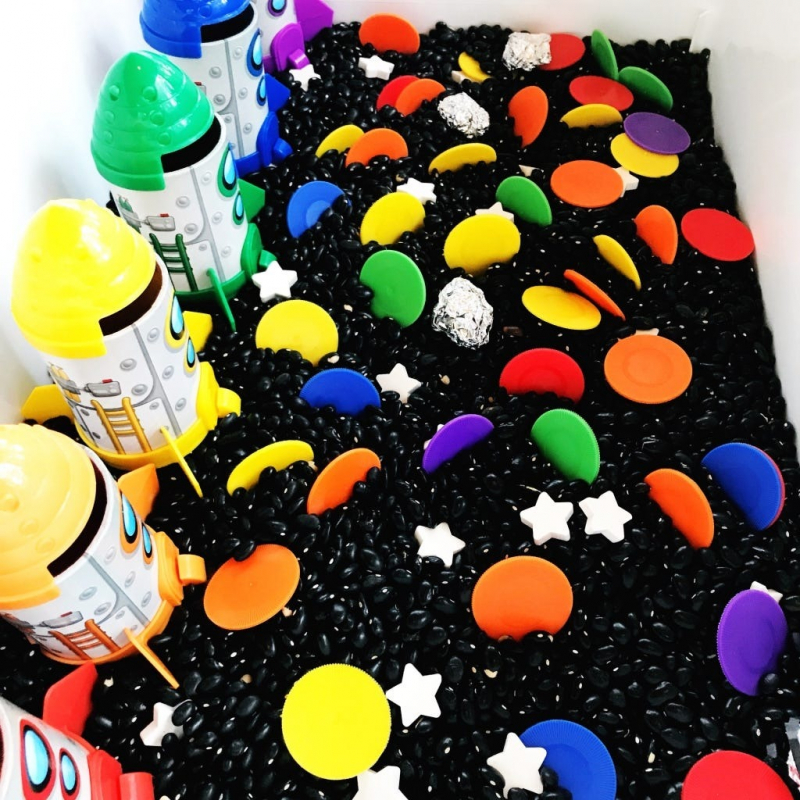
Space-Themed Sensory Bin - Photo via Pinterest -
Elevate the preschool learning experience by seamlessly blending play with storytelling through the enchanting tale of Earl the Squirrel. Introduce this delightful narrative during circle time, setting the stage for an immersive adventure that extends into a carefully curated matching sensory bin. This synergistic approach not only captivates young minds but also adds a purposeful dimension to their exploration.
As you embark on Earl the Squirrel journey through the pages, your preschoolers become entranced in a world of characters and plotlines. This storytime not only fosters a love for literature but also lays the foundation for the upcoming sensory bin activity. The narrative acts as a catalyst, igniting curiosity and anticipation in the minds of the little learners, creating a seamless transition from storytelling to hands-on engagement.
When the story concludes, the sensory bin becomes a tangible extension of Earl's world, allowing children to translate their newfound knowledge into play. The sensory experience enhances their comprehension as they connect story elements with tactile exploration. This integrated approach promotes cognitive development, language skills, and imaginative thinking.
By combining Earl the Squirrel tale with a matching sensory bin, you transform learning into a holistic and engaging experience. This method not only aligns with early childhood education principles but also cultivates a joyous atmosphere where play and storytelling converge to create lasting educational impressions.

Earl The Squirrel Book & Sensory Bin - Photo via Pinterest 
Earl The Squirrel Book & Sensory Bin - Photo via Pinterest -
Unlock a world of sensory exploration with fascinating ice activities that seamlessly integrate into a captivating sense theme for your preschoolers. Immerse young learners in an engaging experience where they can delight in the sensory wonders of touching, smelling and tasting as they interact with melting ice.
This activity transcends the boundaries of traditional learning by providing a multi sensory encounter. As the ice begins to melt, preschoolers can revel in the tactile sensation of touching the cool, transforming surface. This hands on engagement not only sharpens their fine motor skills but also enhances their understanding of temperature changes.
Introduce a variety of aromas encapsulated within the ice for an olfactory journey, stimulating their sense of smell. The release of scents as the ice melts prompts discussions about different smells, fostering language development and vocabulary expansion.
The inclusion of diverse flavors within the ice adds an extra layer of excitement to the activity. Encourage your little ones to explore the taste sensations as the ice melts, creating a unique and enjoyable experience that combines sensory engagement with the exploration of different flavors.
By incorporating these sensory rich ice activities into your curriculum, you not only cater to diverse learning styles but also create a dynamic and enjoyable learning environment. This hands on approach promotes cognitive development, language skills and a profound appreciation for the sensory intricacies of the world around them.
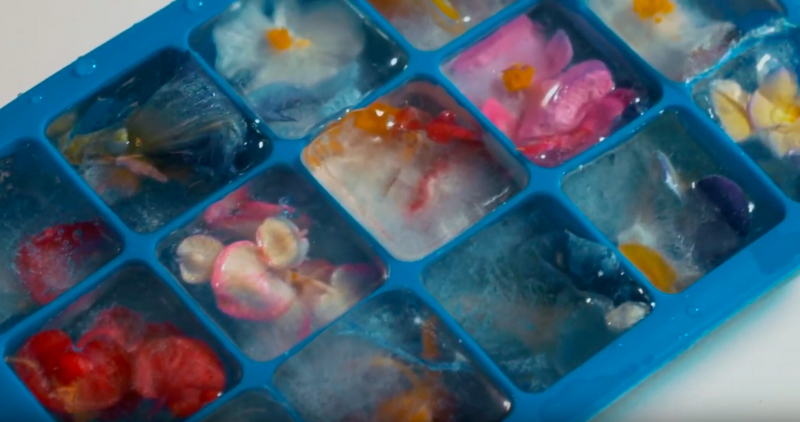
Edible Sensory Ice Cubes - Photo via Pinterest 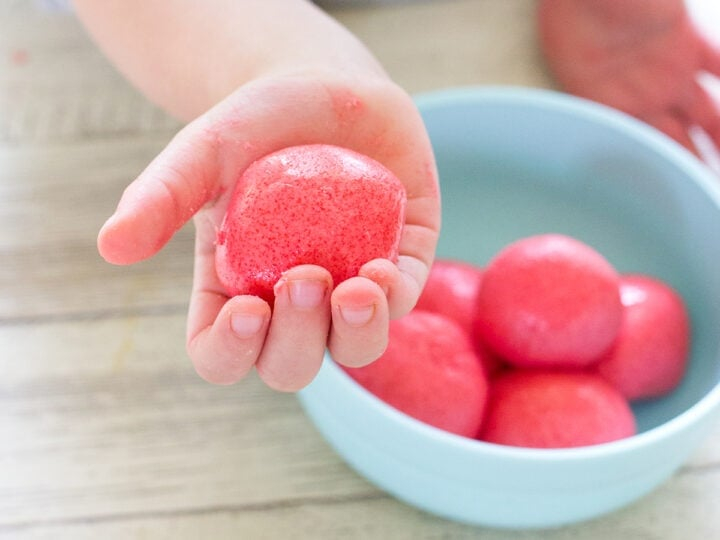
Edible Sensory Ice Cubes - Photo via Pinterest -
Elevate the sensory exploration for your preschoolers by introducing an array of diverse shapes within the ice blocks, transforming a simple activity into an enriching opportunity for early learning. While this variation might require a bit more effort in preparation, the benefits it brings to your little ones cognitive development, particularly in the realm of shape recognition, make it a valuable addition to your curriculum.
Crafting sensory ice blocks in various shapes opens a gateway for preschoolers to delve into the captivating world of geometry. As they interact with these frozen shapes, children not only engage their tactile senses but also embark on a visual and cognitive journey of discovery. The process of making and identifying different shapes within the ice blocks lays a foundation for later mathematical concepts, contributing to a holistic and integrated approach to early education.
Moreover, this activity encourages problem solving skills as children explore how the shapes fit together and interact during the melting process. The sensory experience of touching and observing these distinct shapes further refines their fine motor skills and spatial awareness.
By incorporating shape-oriented sensory ice blocks, you not only enhance the learning potential of the activity but also create a dynamic and stimulating environment for your preschoolers to develop foundational skills in a fun and interactive way.
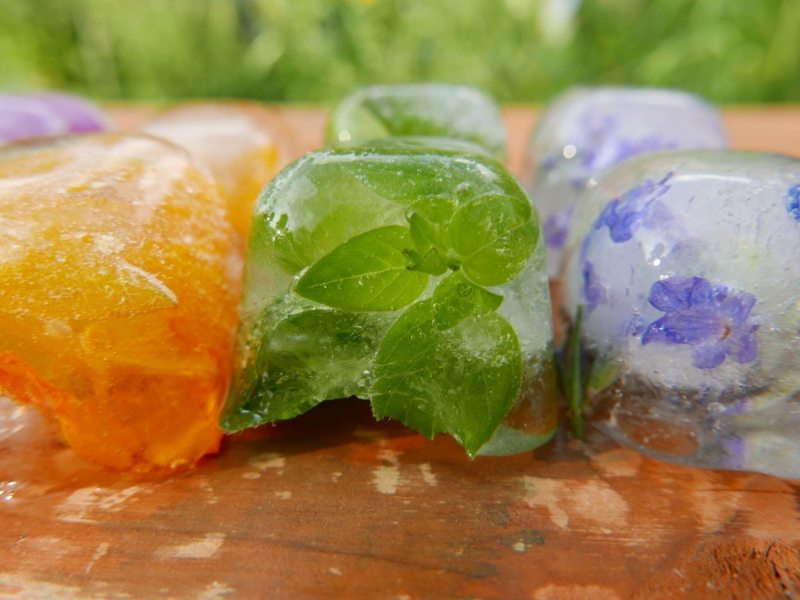
Multi-Shaped Sensory Ice Blocks - Photo via Pinterest 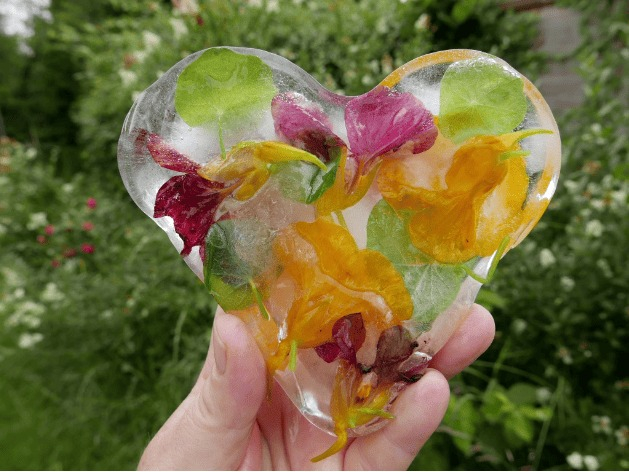
Multi-Shaped Sensory Ice Blocks - Photo via Pinterest -
Engage young minds in a world of vibrant exploration with the simple yet educational activity of mixing paint colors. This hands on endeavor not only sparks creativity but also serves as an ideal platform for introducing a brief lesson on color theory to preschoolers.
Begin by presenting an array of primary colors and encourage learners to predict the outcomes of mixing them. As they dip brushes into different hues, let them experience the magical transformation when colors blend. This interactive process allows children to discover secondary colors and witness firsthand the principles of color mixing.
The activity provides a canvas for fostering critical thinking skills as preschoolers make predictions about the resulting colors. Prompt discussions about their observations, encouraging them to articulate their thoughts, and explore the concept of cause and effect in a visual context.
Beyond the joy of artistic expression, this activity lays the groundwork for a rudimentary understanding of color relationships. From primary color exploration to the creation of new hues, preschoolers can grasp the basics of color theory through this playful hands on experience.
Incorporating color mixing into your curriculum not only stimulates artistic expression but also nurtures cognitive development and foundational knowledge of color concepts. As young learners engage in this creative journey, they not only enhance their fine motor skills but also develop an appreciation for the beautiful world of colors around them.
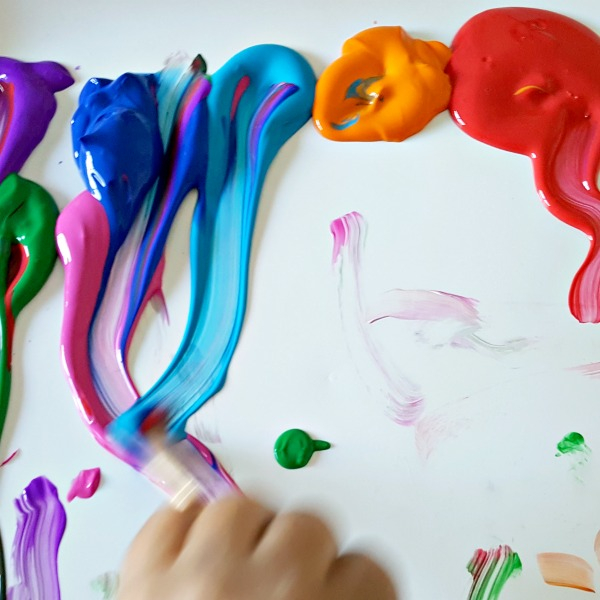
Mixing Paint Colors - Photo via Pinterest 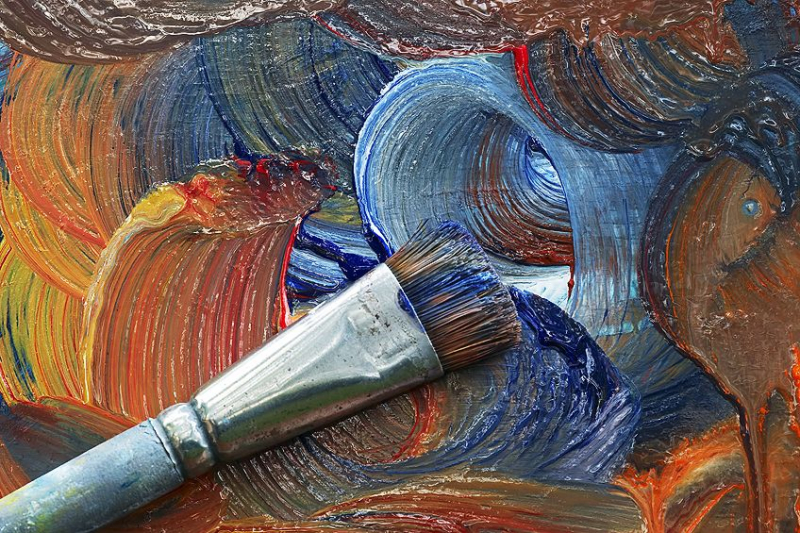
Mixing Paint Colors - Photo via Pinterest -
Introduce a captivating painting theme to your preschoolers through process art activities, turning a simple painting exercise into a delightful adventure. In this creative venture, little ones shake containers filled with paints and rocks, adding an element of excitement and exploration to the artistic process. Once the rocks are adorned with vibrant colors, the magic continues as your hot glue skills come into play, guiding the transformation of these painted rocks into adorable pet snails.
This hands on activity not only introduces preschoolers to the joy of painting but also incorporates elements of sculpture, enhancing their fine motor skills and spatial awareness. As they assemble their unique pet snails, children engage in a process oriented approach, fostering creativity and problem solving skills.
Beyond the artistic fun, this activity serves as a playful introduction to three dimensional art and encourages sensory exploration. The result is a delightful collection of pet snails, each a testament to the imaginative minds and creative hands of your preschoolers. By blending painting with sculpture in a thematic context, you create a dynamic and enriching learning experience that combines artistic expression with essential skill development in a fun and imaginative way.
Shake Paint Rock Snails - Video via Youtube 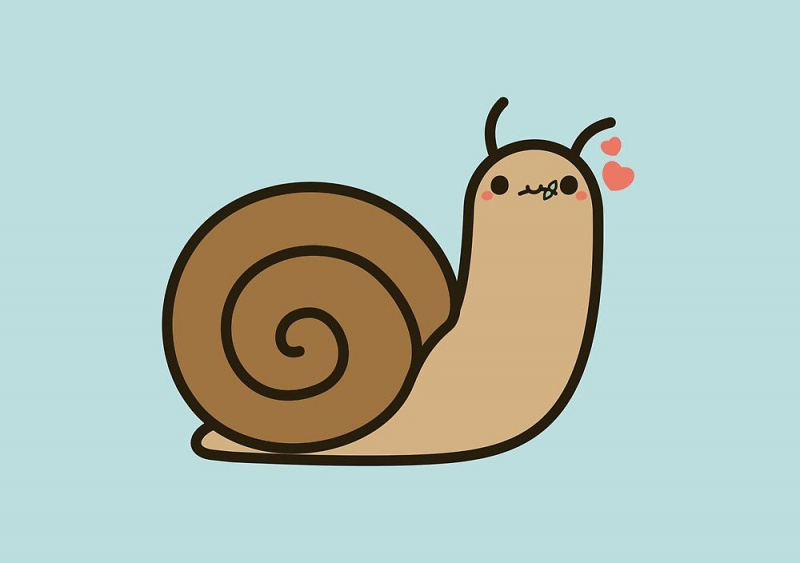
Shake Paint Rock Snails - Photo via Pinterest -
Turn creativity into a dynamic, multi sensory experience with the bounce paint activity, a fusion of art and physical engagement for preschoolers. This innovative approach involves using paint covered bouncy balls wrapped in yarn to create a lively and colorful art piece, making it a delightful combination of a creative project and a physical activity.
Encourage preschoolers to bounce the yarn-wrapped balls onto a generously sized canvas, perhaps using butcher paper for an expansive display. As the balls rebound, they leave behind a trail of vibrant patterns and splatters, transforming the canvas into a unique and visually stunning masterpiece.
Beyond the artistic exploration, this activity promotes gross motor skills as children engage in the physical act of bouncing the paint covered balls. The combination of movement and creativity not only makes learning enjoyable but also enhances coordination and spatial awareness.
The bounce paint activity exemplifies the seamless integration of art and physical play, fostering a holistic learning experience for preschoolers. This dynamic approach not only encourages self expression but also nurtures physical development, making it a lively addition to your curriculum that sparks both creativity and movement in young learners.
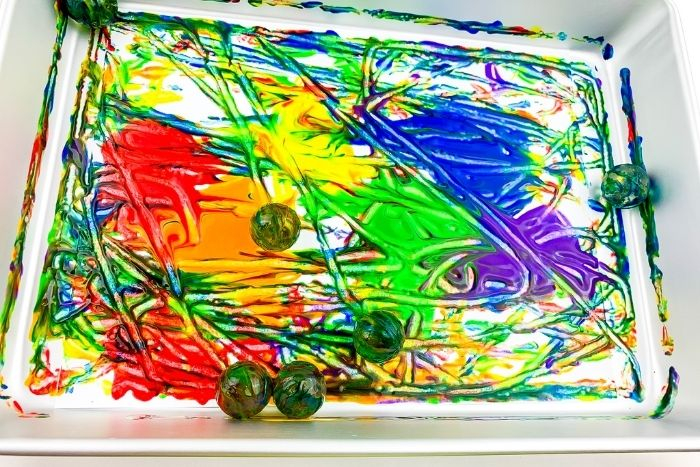
Bounce Paint Process Art - Photo via Pinterest 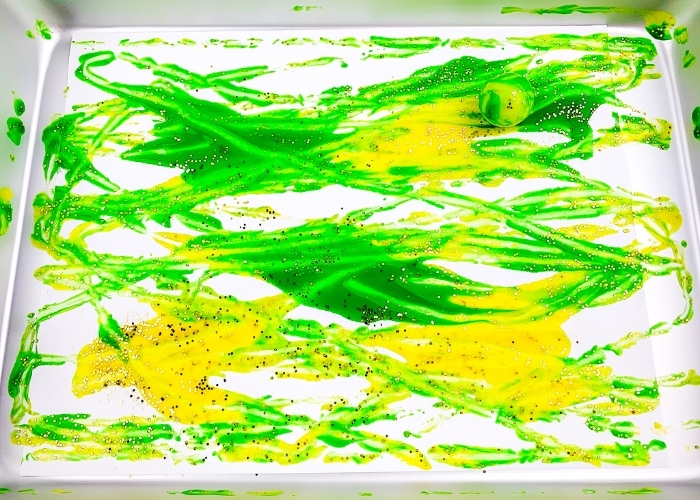
Bounce Paint Process Art - Photo via Pinterest -
Unlock the artistic potential of salad spinners in your preschool classroom with this innovative activity that transforms them into tools for creating mesmerizing abstract art. Move beyond their traditional culinary use and harness the centrifugal force for a vibrant and dynamic painting experience.
To embark on this colorful journey, cut out paper to fit the bowl of the salad spinner. Invite preschoolers to explore their creativity by adding an array of paints onto the paper. As the salad spinner is set into motion, the magic unfolds, spinning the colors together to craft a visually stunning and abstract masterpiece.
This activity not only introduces young minds to the joy of art but also incorporates a playful element of experimentation. As the salad spinner spins, children witness the blending and interplay of colors, fostering an understanding of color mixing and introducing basic principles of physics in a fun and engaging way.
Beyond the artistic exploration, this activity enhances fine motor skills as children engage in the process of adding paint to the paper. The result is a collection of unique, spin inspired artworks, each reflecting the individual creativity and experimentation of your preschoolers. By repurposing salad spinners, you bring an unexpected and delightful twist to the world of abstract art in early childhood education.
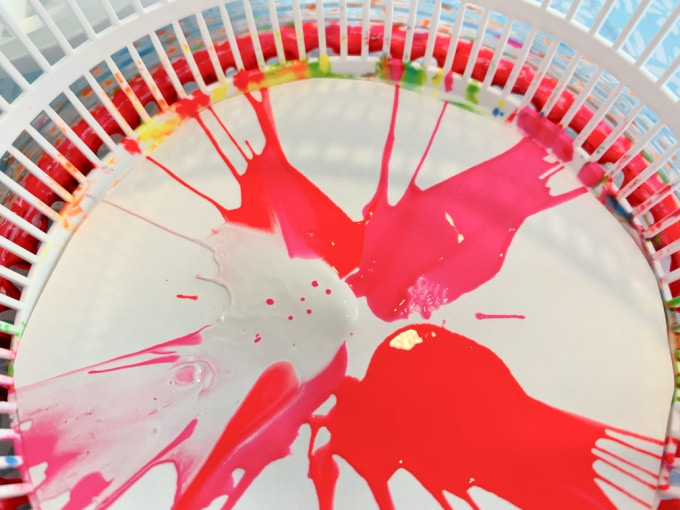
Salad Spinner Art - Photo via Pinterest 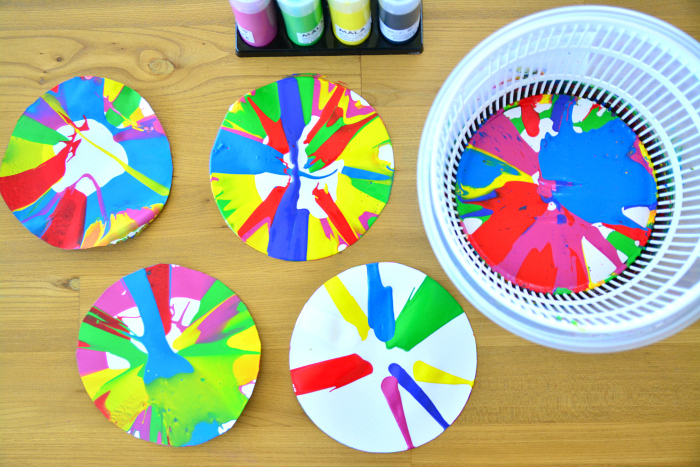
Salad Spinner Art - Photo via Pinterest -
Expand your toddler' artistic horizons with yet another brush-free painting activity. This time, a whimsical journey of rolling paint covered marbles across a blank piece of paper transforms the canvas. As young painters begin on making a compelling abstract art creation, embrace the freedom of creativity and experimentation.
To initiate this creative escapade, generously apply different hues of paint onto marbles. Place these colorful marbles onto the paper and let the children roll them around, allowing the unpredictable patterns to emerge. This process not only sparks imagination but also introduces the concept of cause and effect as the marbles traverse the canvas, leaving behind a trail of vibrant swirls and patterns.
Much like the previous activities, this brush free approach fosters fine motor skills as preschoolers engage in the hands on process of maneuvering the marbles. The unpredictability of the marble's movement adds an element of surprise, making each artwork a unique masterpiece.
Given the potential for a joyful mess, have paper towels ready for cleanup, turning the post-creation phase into a collaborative and responsible endeavor. This tactile and dynamic painting method not only encourages creativity but also offers a sensory-rich experience, making it a memorable and engaging addition to your preschool art curriculum.Marble Painting - Video via Youtube 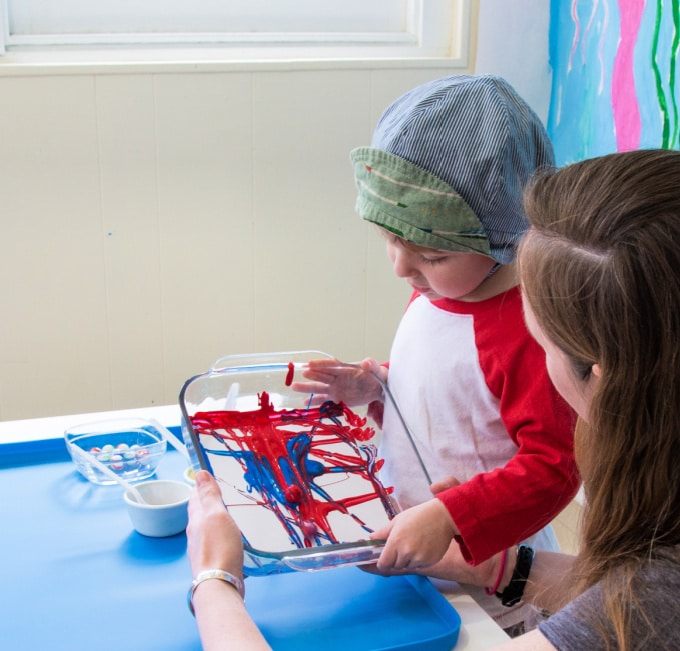
Marble Painting - Photo via Pinterest -
Paint with balloons is a unique and sensory rich activity that will immerse your preschoolers in a world of texture and creativity. This exercise, which departs from standard brushes, adds an intriguing twist to the artistic process, allowing youngsters to experiment with various tools and feelings.
In order to go on this colourful adventure, inflate balloons and dip them in a variety of brilliant colours. Encourage your little painters to create dots and patterns when the paint covered balloons make contact with the paper, releasing their creativity in a dramatic and tactile way.
The physical pleasure of manipulating the balloons to the visual thrill of seeing colours combine on the paper are all part of the sensory experience of painting with balloons. This hands on method not only encourages artistic expression but also improves fine motor skills as children manipulate the balloons to create their own works of art.
This game stimulates teamwork and social contact among young painters since each balloon dot contributes to the expanding artwork. Balloon painting's unexpected nature adds an element of surprise, making the creative process both fun and unforgettable.
Painting with balloons in your preschool art programme not only fosters a love of artistic expression but also gives young learners with a varied and interesting sensory experience. In the early years of schooling, this creative method to painting develops creativity, fine-tunes motor abilities, and builds a brilliant tapestry of colourful memories.Balloon Painting - Video via Youtube 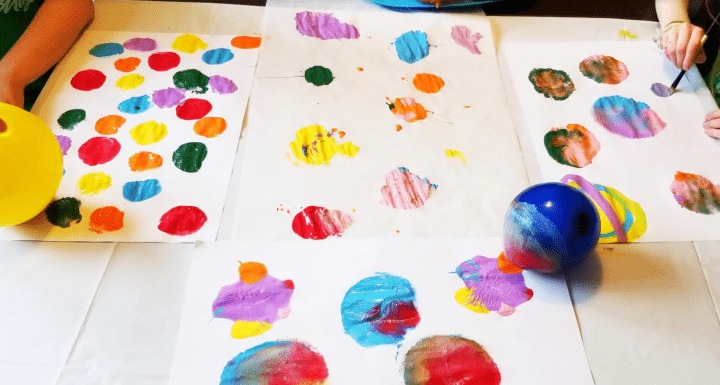
Balloon Painting - Photo via Pinterest












